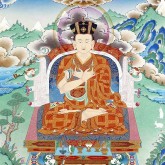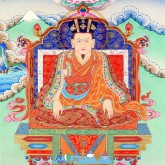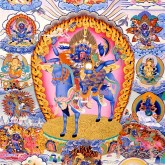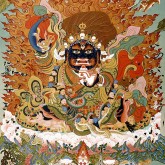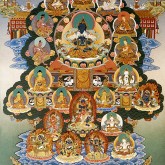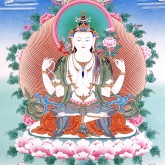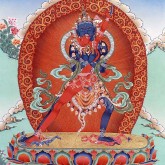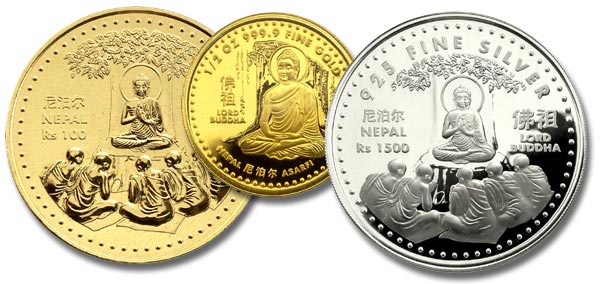
Lama Ole Nydahl teaching in 2010
This teaching was published in 2001 in edition 9 of the magazine “Buddhism Today”.
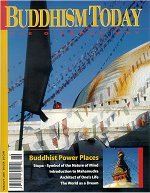
Buddhism Today Vol.9
Any observation of the outer and inner worlds refers one to mind. Only mind is constantly and truly present, although not as a “something.” Consciousness is like space, unchanging and timeless, while its objects are conditioned. Both the outer world and beings’ inner states appear, change, and disappear. Only the experiencer is timeless, limitless, and everywhere.
The Great Seal, Mahamudra in Sanskrit and Chag Chen in Tibetan, was taught by Buddha to fully awaken mind’s potential and to seal its enlightened nature. Whoever rests in the radiance of the mirror while enjoying its images, and recognizes the indestructibility of the ocean beneath the play of the waves, has reached this goal.
The path there is a steadily increasing experience of richness and the bliss which enlightenment makes permanent. It already begins to manifest in short and weakened forms during the moments when no habits or expectations distract mind. Also non-meditators may taste some of this power during the free fall before the parachute opens or on a fast motorcycle, and all (hopefully) know it from sexual union. It appears in a flash when sneezing, as the joyful “a-ha” at a new and striking insight, or when one shares in the goodness or joy of others. Meditation, however, is the concise and scientific way to make this state permanent. In particular, the three “old” or “red hat” schools of Tibetan Buddhism, which focus on the Diamond Way practices of view and transformation, can make such moments into a lasting experience. Even a short exchange with a holder of the Great Seal of awareness can set off this maturation process, but a close friendship with him, or one’s co-operation in his groups is always the most effective method. In meditation, as in life, one will then experience a growing and joyful oneness with phenomena until suffering and frustrations are definitely seen as something unnecessary and odd.
(more…)
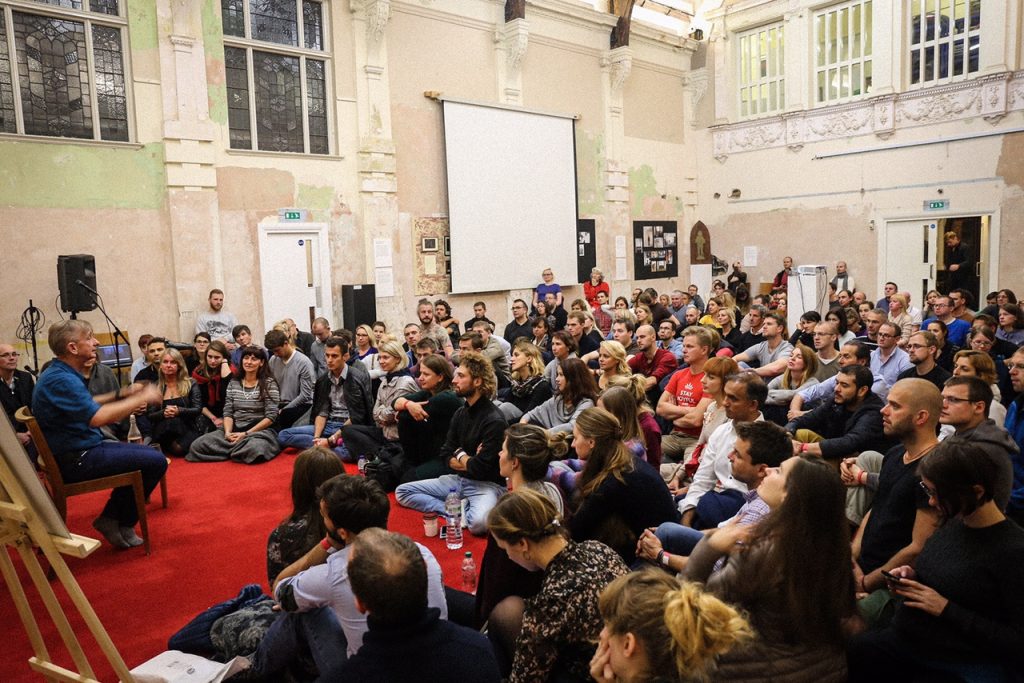
 Follow
Follow


